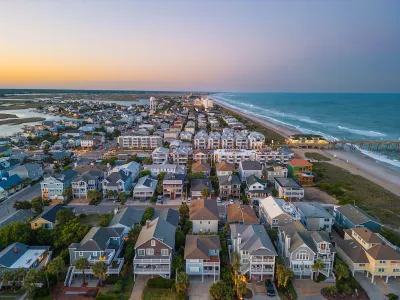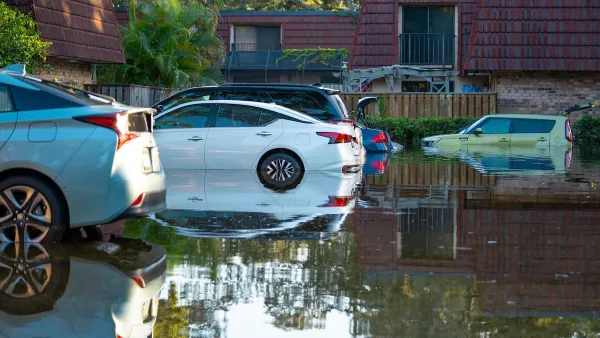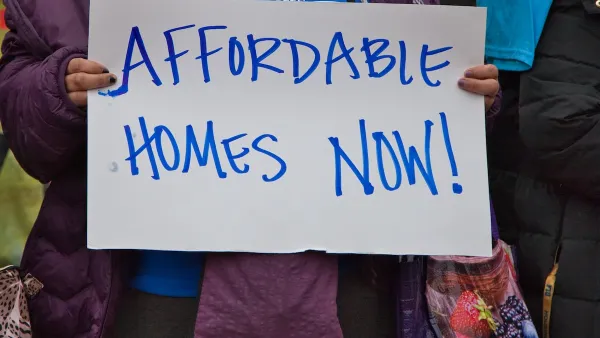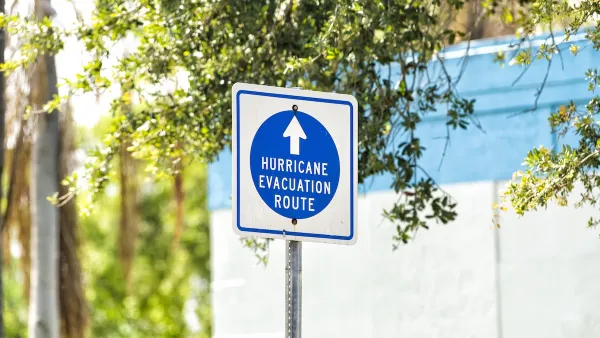Spiking insurance costs in coastal areas prone to climate disasters are making it harder for low-income housing developers to keep building.

Extreme weather driven by climate change is making it increasingly difficult to build affordable housing, reports Kelly Kenoyer in a piece for WHQR. This is largely because insurance companies are hiking premiums or refusing to cover regions prone to natural disasters.
According to one North Carolina affordable housing developer, premiums have gone up by as much as 70 percent. “Coastal North Carolina is a major retirement hub: The two fastest growing counties in the state, Pender and Brunswick, are next door to New Hanover County, and much of that growth is from retirees. Many of those moving have higher incomes than local residents, which helps drive up market-rate rents: and pushes some locals out of their homes, unless they can find subsidized apartments.”
As Kenoyer explains, “That chilling effect hits tax credit developers more than for-profit developers. After all: market rate developers can just increase rents to cover the rising tides of insurance.” Meanwhile, retirees from around the United States continue to move to disaster-prone areas, keeping demand for housing in coastal areas high.
The article notes that the federal government could ease the burden on affordable housing developers by standardizing requirements for the various housing programs used by low-income housing builders and incentivizing building climate-resilient properties.
FULL STORY: Climate-driven insurance hikes are making affordable housing even harder to build

National Parks Layoffs Will Cause Communities to Lose Billions
Thousands of essential park workers were laid off this week, just before the busy spring break season.

Retro-silient?: America’s First “Eco-burb,” The Woodlands Turns 50
A master-planned community north of Houston offers lessons on green infrastructure and resilient design, but falls short of its founder’s lofty affordability and walkability goals.

Delivering for America Plan Will Downgrade Mail Service in at Least 49.5 Percent of Zip Codes
Republican and Democrat lawmakers criticize the plan for its disproportionate negative impact on rural communities.

Test News Post 1
This is a summary

Test News Headline 46
Test for the image on the front page.

Balancing Bombs and Butterflies: How the National Guard Protects a Rare Species
The National Guard at Fort Indiantown Gap uses GIS technology and land management strategies to balance military training with conservation efforts, ensuring the survival of the rare eastern regal fritillary butterfly.
Urban Design for Planners 1: Software Tools
This six-course series explores essential urban design concepts using open source software and equips planners with the tools they need to participate fully in the urban design process.
Planning for Universal Design
Learn the tools for implementing Universal Design in planning regulations.
EMC Planning Group, Inc.
Planetizen
Planetizen
Mpact (formerly Rail~Volution)
Great Falls Development Authority, Inc.
HUDs Office of Policy Development and Research
NYU Wagner Graduate School of Public Service





























